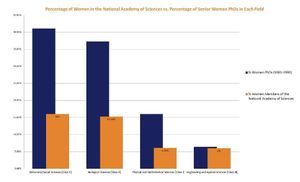A comprehensive analysis of NIH funding for 2008 shows that success and funding rates differed little between female and male applicants. While this is good news, the study did reveal that almost all of the midcareer and senior investigator grants received significantly more male than female applicants.
Other results reflect a gap between male and female invetigators:
- Women are less successful at receiving renewals of R01 awards.
- 30% of investigators with only one R01 award are female, but only 13% of those who hold four or more R01s.
- Women are more likely to perform human subjects research.
The overall message, however, is one of increasing parity. It is especially encouraging that women predominate in applications for some of the early career training grants. Still, it shouldn’t take the turnover in generations to institute greater equality.
